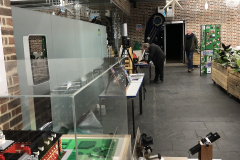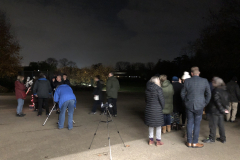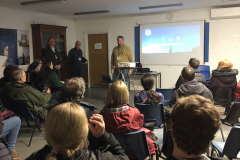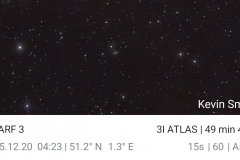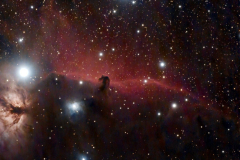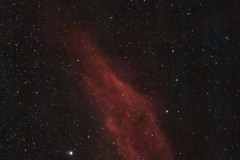




Announcements
Come and join CMHASD stargazing at Hall Place & Gardens, Bexley – Wednesday, 25th February 2026 from 7pm.
Join CMHASD for some Stargazing at Hall Place & Gardens on the 25th February 2026.
Advance booking required.
Please note this is a ticket only event organised by Bexley Council.
Tickets can be purchased at: https://www.hallplace.org.uk/event/stargazing-february-2026/
We will be there from 7pm to 9pm. (Doors open from 6.45pm)
Outdoor activities are weather dependant.
Below is a selection of CMHASD photos from previous Stargazing events held at Hall Place.
The Dick Chambers Observatory – Status
The observatory and telescope are ready to use by members for visual observing. The telescope is fitted with an eyepiece. Any questions please direct them to Keith, Steve, Simon and Andy.
Gallery
Other Images
Sun | Comets | Mercury | Venus | Atmospheric Optics | Meteors | Auroa and NLC | Moon | Minor Planets | Mars | Jupiter | Saturn | Uranus | Neptune | Messier | Caldwell | All Deep Sky | Conjunctions | Transits | Solar Eclipse | Lunar Eclipse | Wide Field |ISS & Space Junk | Exo-Planets
Society News
The Sun & Full Moon – 3rd Jan 2026
The 3rd of Jan 2026 saw the 1st Full Moon of the year and several members got out their scopes and cameras and took some lovely images of the Moon. Some members also took the opportunity to image the Sun that day too.

Sun & Full Moon by Honor Wheeler.
Taken using a Dwarf3 smart scope taken from Dartford.

The Sun by George Buckberry.
Taken using a Dwarf3 smart scope taken from Hextable.

The Full Moon by George Buckberry.
Taken using a Dwarf3 smart scope taken from Hextable.

Full Moon rising by John Howarth taken from Bexleyheath.

Full Moon rising by Gary Hunt taken from the Isle of Sheppey.

Full Moon rising by Kevin Smith taken from Deal, Kent.

Full Moon rising by John Archer taken from East Sussex.
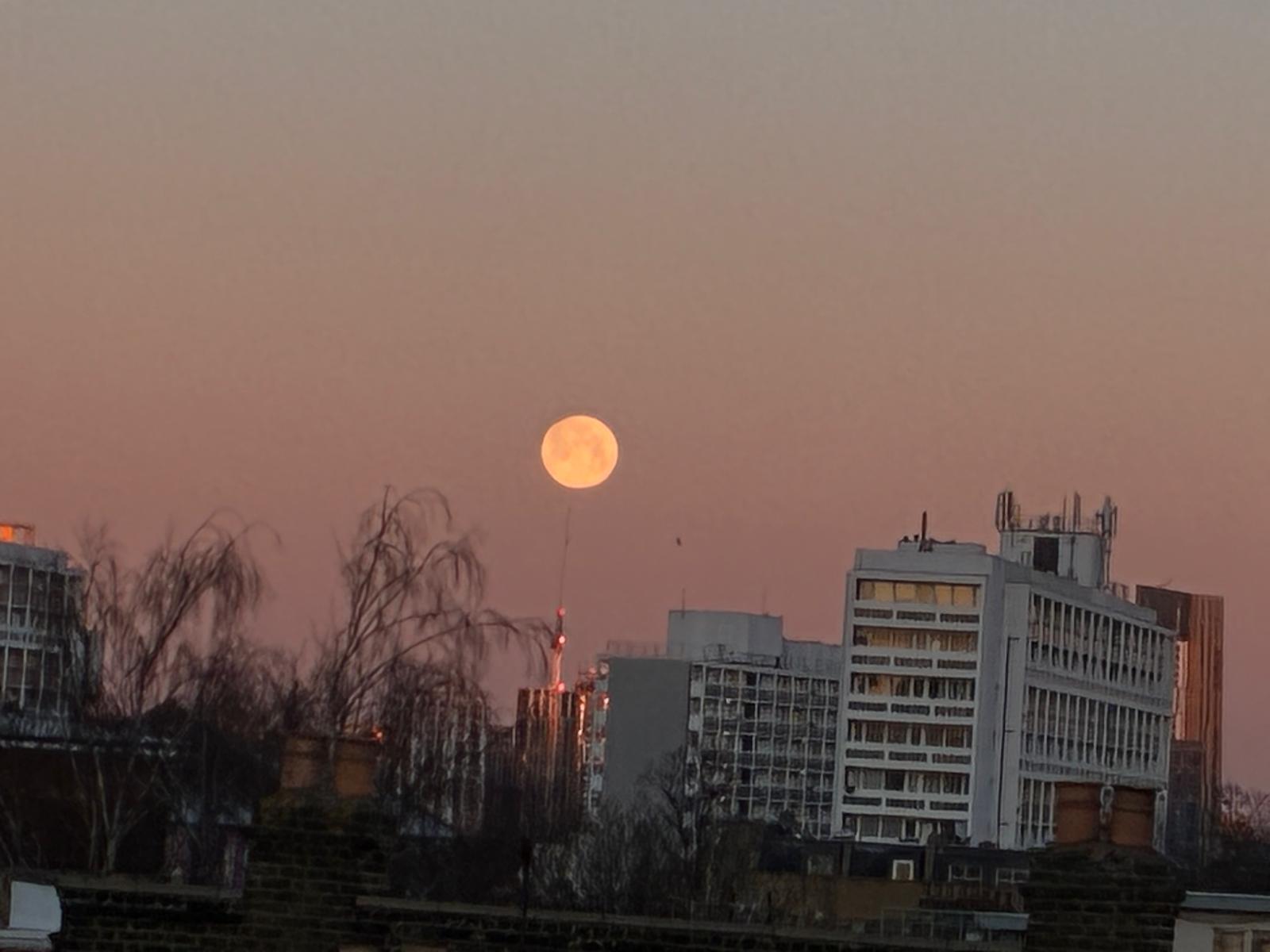
Full Moon by Dominique Ferrand taken from London.

Full Moon by John Archer taken from East Sussex.
Taken using a Dwarf3 smart scope. The photo is made up of a stack of 20 images.
The Horsehead and Flame Nebula
Below are 2 images of the Horsehead Nebula and Flame Nebula taken by member George Buckberry. The 1st on the 31st Dec 2025 having only 17mins and 45 seconds of total exposure and the 2nd on the 1st Jan 2026 having 1 hour and 15mins total exposure; both taken using a Dwarf3 smart scope. The Horsehead Nebula is located in the centre of the images and the Flame nebula is located at the top middle of the images.

The Horsehead Nebula, also known as Barnard 33, and its companion, the Flame Nebula, sit near the star Alnitak in Orion’s Belt.
The Horsehead Nebula is a small dark nebula located about 1,375 light-years from Earth and is located just south of Alnitak, the easternmost star of Orion’s Belt and is part of the much larger Orion molecular cloud complex within the Orion B cloud. It is one of the most identifiable nebulae because of its resemblance to a horse’s head.
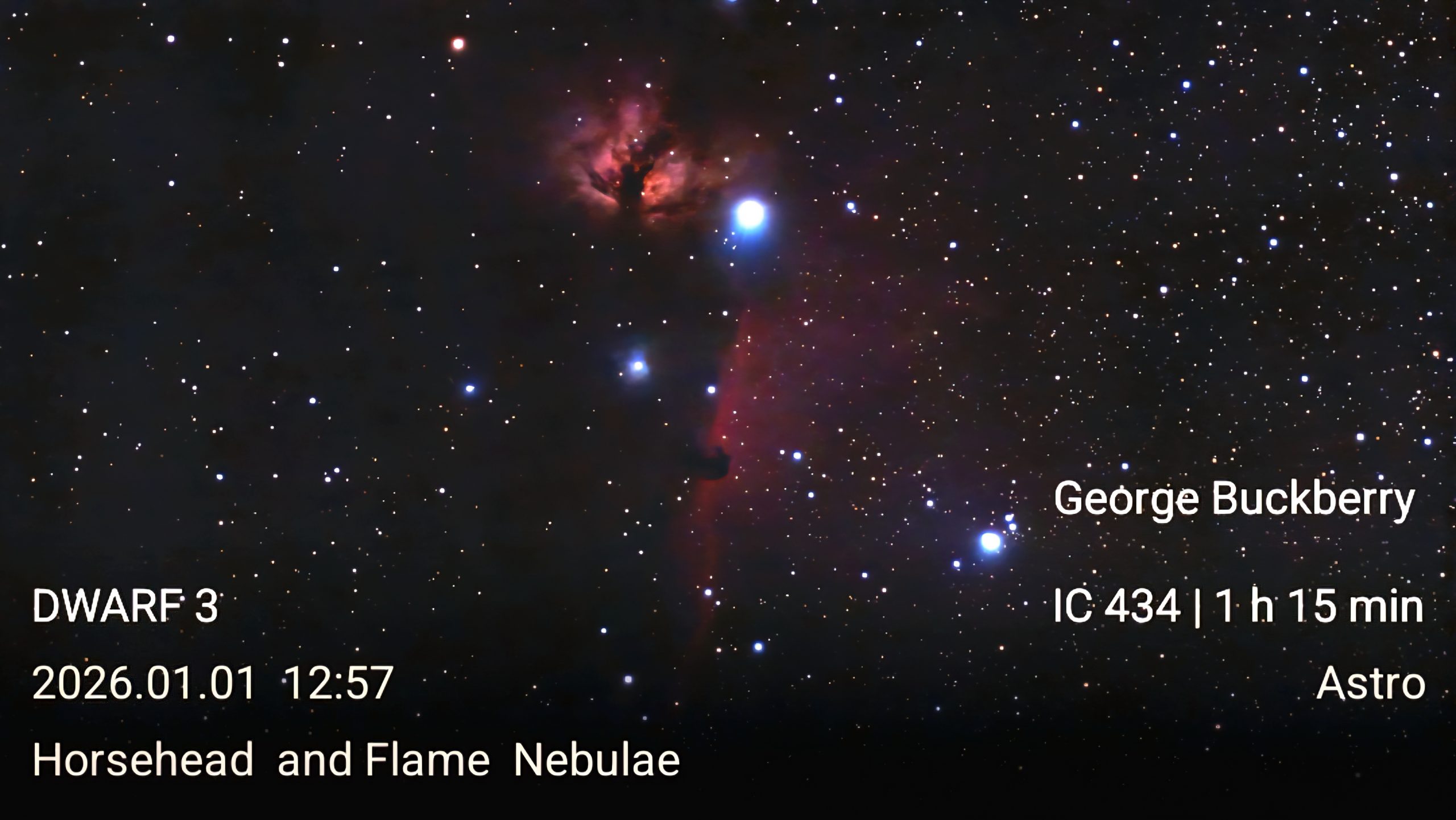
The Flame Nebula, designated as NGC 2024 and Sh2-277, is an emission nebula also in the constellation Orion. It is about 1350 light-years away. The Flame Nebula also lies within the Orion B cloud of the larger Orion Molecular Cloud Complex.
The bright star Alnitak the easternmost star in Orion’s Belt, appears very close to the Flame Nebula in the sky. But the star and nebula are not physically associated with one another. Alnitak lies 1260 light-years from Earth.
The Sun & Moon – 31st Dec 2025
The Sun & a Waxing Gibbous Moon (89.7% illuminated and 11.64 days old) taken on the last day of the year 2025.


The Sun by Honor Wheeler taken from Dartford using a Dwarf3 smartscope. 50 stacked images and processed in Snapseed.
The Sun taken by George Buckberry from Hextable using a Dwarf3 smart scope.


The Moon taken by Honor Wheeler from Dartford using a Dwarf 3 smartscope. 50 stacked images and processed in Snapseed.
The Moon taken by Neil Webster from St Mary’s Platt.
The image is made up of 6 frames: each 90s x 33fps (20% selected by AS). Neil used a AA 115 APO, EQ6 R, ZWO ASI290MM and R-IR Filter to capture the images and then processed them using Firecapture, AutoStakkert, Photoshop and Microsoft ICE.
Congratulations to…..
Congratulations to Simon Dawes, Martin Crow and Gary Hunt on the latest paper published by the ExoClock project of which they are co authors ”ExoClock Project IV: A homogeneous catalogue of 620 updated exoplanet ephemerides” To see a copy of the paper click on the link below.
https://arxiv.org/abs/2511.14407
Then another congratulations to Martin Crow for being a co author on the following paper titled ”TrES-1b: A Case study in detecting Secular Evolution of Exoplanet Orbits.” To see a copy of the paper click the link below.
Congratulations

Congratulations to Honor Wheeler for her superb Lunar Eclipse image taken on the 7th September 2025 being shown at the BAA (British Astronomical Association) Society Meeting sky notes and in their Lunar section too!
Honor acquired the image using a Canon M6II, 18-400mm lens, set at ISO1000, F6.3, and 1/500sec
The Orion Nebula

The Orion Nebula taken by George Buckberry on the 1st Jan 2026 using a Dwarf3 smart scope. This is a brilliant image as it was acquired just after a total of 15 mins of exposure. Just shows what smart scopes can do!
”The Orion Nebula (also known as Messier 42, M42, or NGC 1976) is a diffuse nebula situated south of Orion’s belt in the constellation of Orion. It is one of the brightest nebulae and is visible to the naked eye in the night sky with an apparent magnitude of 4.0. It is 1,344 ± 20 light-years (412.1 ± 6.1 pc) away and is the closest region of massive star formation to Earth. M42 is estimated to be 25 light-years across (so its apparent size from Earth is approximately 1 degree). It has a mass of about 2,000 times that of the Sun. Older texts frequently refer to the Orion Nebula as the Great Nebula in Orion or the Great Orion Nebula.” Ref:https://en.wikipedia.org/wiki/Orion_Nebula
The Rosette Nebula

A stunning image of the Rosette Nebula taken by Kevin Smith on the 27th Dec 2025 using a Dwarf3 smartscope. The image is a total of 5 hours and 57 mins of exposure.
The Rosette Nebula (also known as Caldwell 49) is a huge star-forming region spanning 100 lightyears across and located 5,000 lightyears away.
It can be seen in the Monoceros constellation in the winter months and is located between stars Betelgeuse in Orion and Procyon in Canis Minor. Draw a line between Betelgeuse and Procyon, look just south of that line, about halfway along, and you will find it.
The last Supermoon of 2025
A fabulous selection of Supermoon images taken on the 4th/5th December 2025. The year 2025 featured a rare series of three consecutive supermoons: the October 7th Harvest/Hunter Moon, the November 5th Beaver Moon, and the December 4th Cold Moon, where the Moon appears larger and brighter than usual. These supermoons occur when a full moon coincides with the Moon being at or near its closest point to Earth in its orbit.
For more information about the term ‘Supermoon’ and where Full Moon names originate; check out the following sites/pages: https://en.wikipedia.org/wiki/Supermoon
https://www.almanac.com/full-moon-names
https://www.timeanddate.com/astronomy/moon/full-moon-names.html


George used a Dwarf3 smartscope to take this image.
The Moon by Diane Clarke taken using a Seestar 50 smartscope.

The Moon taken by Neil Webster. The image is made up of 8 frames. Each 90s x 32fps. The image was taken using a AA115 APO, EQ6 R, ZWO ASI290MM, and R/IR Filter. It was processed using Firecapture, AutoStakkert, Photoshop, and Microsoft ICE. Taken from St Marys Platt, Kent, UK.
Deep Sky images by George Buckberry
A super selection of deep sky images taken by George Buckerry on the 4th and 31st Dec 2025 using a Dwarf3 smart scope.
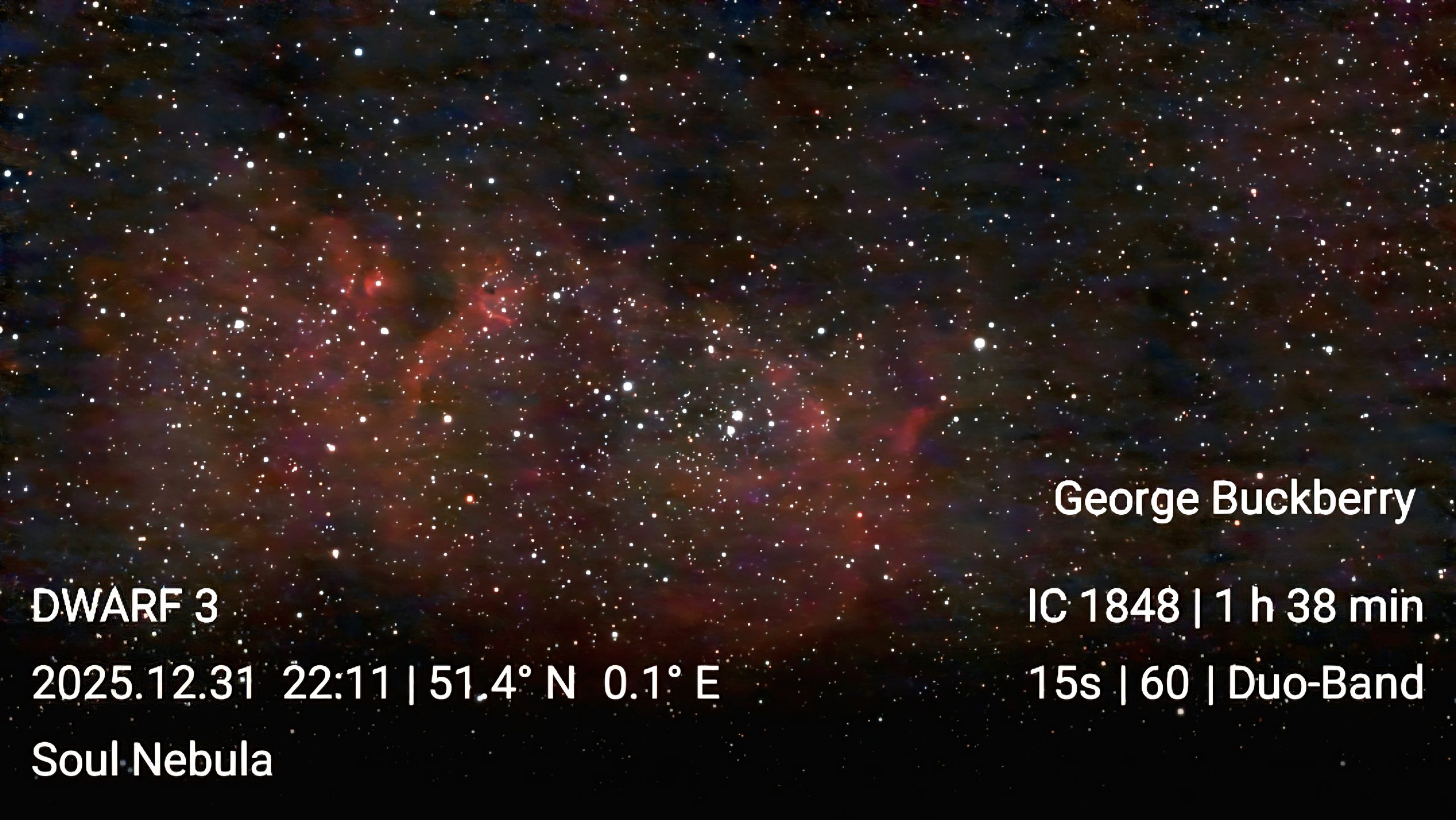

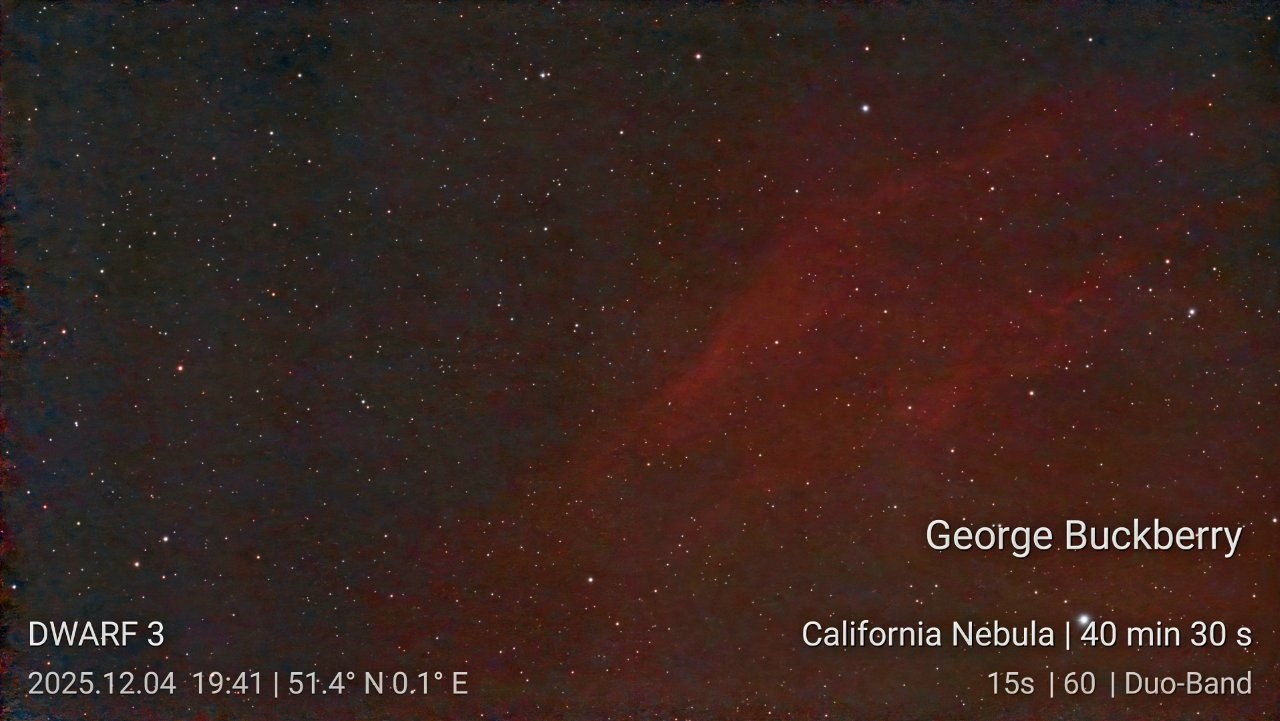

Lunar Halo – 13th Dec 2025
Four fab Lunar Halo images. All taken on the night of the 13th Dec 2025.
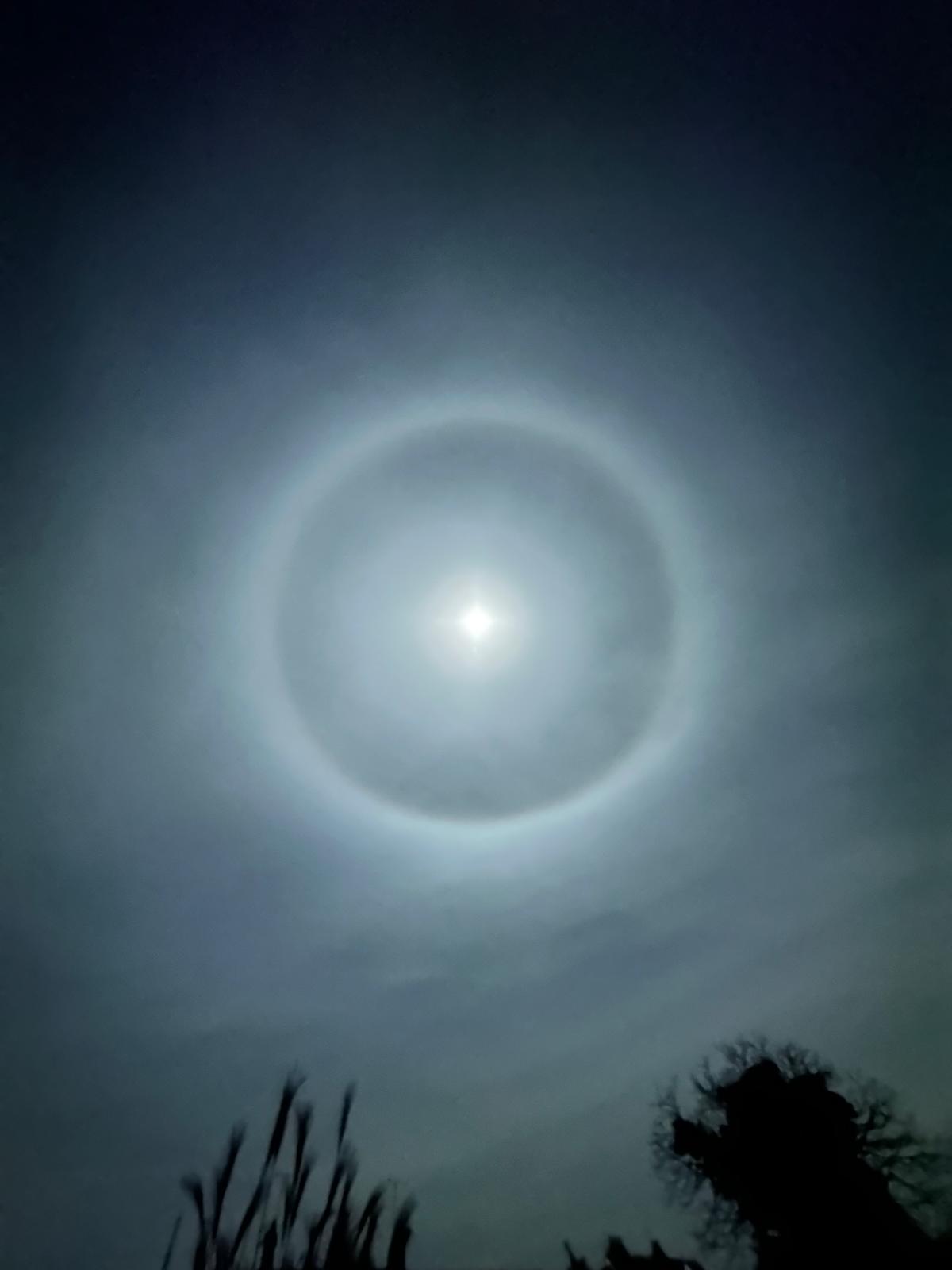

By Martin Crow from Burham-On-Crouch.
By Gary Hunt taken from Isle of Sheppey.


By Honor Wheeler from Dartford.
By George Buckberry from Hextable.
Christmas Quiz – 2025
CMHASD members David Grist and Steve Floodgate pulled out all the stops to provide a night of head scratching, puzzlement and fun. Thank you Dave & Steve for all your hard work & effort creating the quiz. It was a great night and we are all looking forward to the next one!
Chairman Gary Hunt wrote: ‘Title: Quizmas, Klingons & Missing Trophies at Crayford Manor House!
On Thursday evening, 11th December 2025, CMHASD Pavilion, once again echoed to the sounds of festive cheer, competitive groaning, and the unmistakable hum of suspicious transporter activity, as the Astronomical Society’s Christmas Quiz warped off in fine style.
The evening was masterfully created and run by Dave Grist and Steve Floodgate, affectionately (and accurately) known as Eric’n’Ern, channelling Morecambe and Wise with added astronomy and fewer dancing routines. Their efforts ensured chaos, laughter, and confusion were course delivered in precisely the right orbital trajectory.
Four teams boldly went where quizzes have gone before:
The Vulcans
The Klingons
The Andorians
The Borg Collective
After multiple rounds — including space-themed LP album covers, astronomical knowledge, and a paper based round of astro celebrity images that proved some stars age better than others — it became increasingly clear that the Klingons were on a despicable, bloodthirsty mission. A significant score (best not questioned too closely) propelled them well into the lead.
Festive snacks flowed freely, fuelling brains and banter alike, while the annual Christmas Jumper Competition was convincingly won by ‘comet maker’, Debra, whose ROG creation dazzled judges and competitors alike without causing a mass extinction event.
Victory was ultimately declared: the Klingon Team triumphed (a resounding Qapla’! echoed through the hall), and the traditional annual prize of Goats’ Cheese was duly awarded. Sadly, the actual trophy was nowhere to be found, having apparently been “beamed up” by Scotty, allegedly on the orders of the Vulcans. A Star Fleet inquiry may follow. Or not…
Post-quiz celebrations involved the liberal quaffing of Klingon Blood Wine (or something suspiciously similar), cementing the evening as both educational and mildly hazardous.
For those unable to attend in person, Eric’n’Ern and Mike thoughtfully recorded a special version of the quiz, allowing members to play — or replay — the fun at home, free from time pressure, judgement, or missing trophies.
All in all, the evening was a resounding success: festive, funny, and thoroughly enjoyed by all. Same time next year — assuming the trophy rematerialises.
Live long, and prosper, set phasers to stun, and pass the cheese.’















Jim Burchell’s images – 18th Nov to the 26th Nov 2025
A super collection of images taken by member Jim Burchell from the 18th to the 26th Nov 2025.




John Archer’s images – 21st Nov to the 28th Nov 2025
A superb collection of images taken by member John Archer from the 21st to the 28th Nov 2025 using a Dwarf3 smartscope.




The Moon on the 28th Nov 2025
Latest images 11th to 20th December 2025
A fabulous selection of images taken by members Kevin Smith, Dan Stevens and George Buckberry from the 11th to the 20th December 2025.
Kevin Smith using a Dwarf 3 smartscope




The Horsehead Nebula. A total of 4 hours 15mins exposure time.
Dan Stevens using a Seestar smart scope


George Buckberry using a Dwarf3 smartscope

 T
T
The Sun with a single sunspot……..


The Moon – 29th November 2025
An absolutely stunning image of the Moon taken by member Neil Webster on the 29th November 2025. MOON: Waxing Gibbous, 66.8% illuminated and 9.56 days old. Neil acquired the image using an AA 115 APO, EQ6 R, ZWO ASI 290MM, and R/IR filter. 8 frames: each 90s x 31fps...
The Moon – 30th November 2025
A super image of the Moon taken by member George Buckberry on the 30th November 2025; using his smart scope Dwarf3. The image was taken at 16:35 UTC, Exp 1/320s, Gain 10, and a VIS filter was...
Comet C/2025 K1 (Atlas)
Here is member George Buckberry’s latest image of Comet C/2025 K1 (ATLAS) taken on his Dwarf3 smart scope on the 26th November 2025. The image is made up of 12 stacked images at 15S exposure, Gain 60 and Astro filter. The first is the full image and the second...
17th/18th November 2025 images by George Buckberry
The latest images from member George Buckberry. Taken using a Dwarf3 smart...
Moon
A fantastic image of a waning gibbous Moon taken by member Diane Clarke on the 8th November 2025 using a Seestar s50 smart...
Dwarf3 images by Dr. Mike Rushton
Two super images taken by Dr. Mike Rushton using his Dwarf3 smart scope on the 12th November 2025 of the North America Nebula (Caldwell 20) and the...
George Buckberry’s Dwarf3 images from the 8th and 9th November 2025
A super collection of images taken by member George Buckberry on the 8th and 9th November 2025 using his Dwarf3 smart scope. The Moon: 16 subs at 1/400th S exposure, Gain=0 and a Vis filter. Details of how George took the rest of his images with the...
John Archer’s latest deep sky images
Two fantastic deep sky images by member John Archer taken on the 8th November 2025 using his Dwarf3 smartscope. Details of how John took his images are on the...
George Buckberry images taken on the 2nd Nov 2025
Three super images by member George Buckberry taken on the 2nd November 2025 using a Dwarf3 smart scope. All the images were run through Stella Studio. The Moon 300 stacked images at 15S exp, Gain10 and a Vis filter used. The Veil Nebula A four panel mosaic of...
NGC 281 PACMAN NEBULA by member Neil Webster
A stunning image of NGC 281 the PACMAN NEBULA by member Neil Webster. ”Shot with an 89% Moon which made processing a challenge!! But, Gradient X Terminator saved the day!!’‘ said Neil Image taken using – AA115mm APO, EQ6 R, ZWO ASI294MC Pro,...



